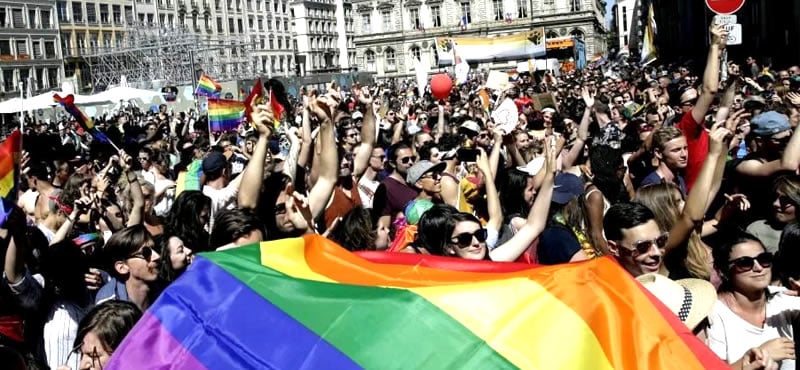For my second visit, I thought it would be without justice if I didn’t visit any of the churches here in Lyon, questioning those spaces for their queerness. Thus, I decided to visit the Chapelle de la Trinité. I had been here once before with my architecture course from last month, and was so taken aback by the space. Chapelle de la Trinité is apart of a school building in Lyon around the Hôtel de Ville area. It is not that easy to get into, and luckily the people from my last visit recognized me and allowed me back into the space. The “church” has been hollowed out and is now used for musician events. The ceiling and much of the original Baroque decoration remain, including the front stone altarpieces and golden sun near the entrance. The space, with the marble flooring and ornate décor is just gorgeous (one might even call it a little gay in there).
I wanted to negotiate this space for its queerness specifically because of its modern identity. That is, the space has been transformed from its original purpose as a holy space to a musical venue. The comparison alone is really interesting: a church has such specific energy governing where and how someone enters within it. When entering one of these churches, it would be for a number of reasons, but it would all center on someone seeking communities, or salvation, or even penance. The space called on you to stand in awe or fear of it. The visiting of a church is one of rigid standing and hushed tones. While a musical venue could best be described as its antithesis. You are encouraged to roam there; music and laughter fill more space than the air itself. The body is free to move explosively and passionately. Turning this space of confining worship and religious community into a space of boundless bodily expression and a new, modern community is somewhat ironic. This transformation is seen further, and more meaningfully, by this space also being used to exhibit art. In particular, this art is rendered in a religious Medieval Christian-esque style with the subjects being those you would not have found during the Dark Ages: Refugees. Rendered here in this style, these portraits decenter the harmful ideas that surround someone who is a refugee. Even more, these are now holy characters, symbols of family, faith, and community. They are divine, like they always have been but now validated and forced to been seen with the reverence and compassion they deserve.
When I was walking the now massive nave, avoid of its pews and bibles, I couldn’t help but imagine how many other queer people, both modern and Medieval peoples, had entered this space. My research asks this very question applying it to current churches. Spaces like this reveal the very essence of what I hope to unravel and demonstrate: That queerness and religiosity are not two-ends of a spectrum, but rather as interwoven as all others aspects of identity and self. I could rest easy in the fact that I know that I was not the first queer person in this space. I might have been one of the few and first opening queer persons, which is sad in a way, but to know that regardless of whatever law or hateful people would revel to see me and people like me extinguished, we persist.











